Away from the cacophonous chorus of heavily corporatised art festivals, the Kochi-Muziris Biennale hopes to return after three pandemic-ridden years to its foundational purpose: to give back to people their real stories, their strengths, their songs. This year, it adopts storytelling as strategy in myriad ways: words, visuals, poetry, film, music.
If there is anything that has the power to pull out a festival mired in administrational controversy, it is the clean slate of a fresh ideology — a new story that embraces all our stories.
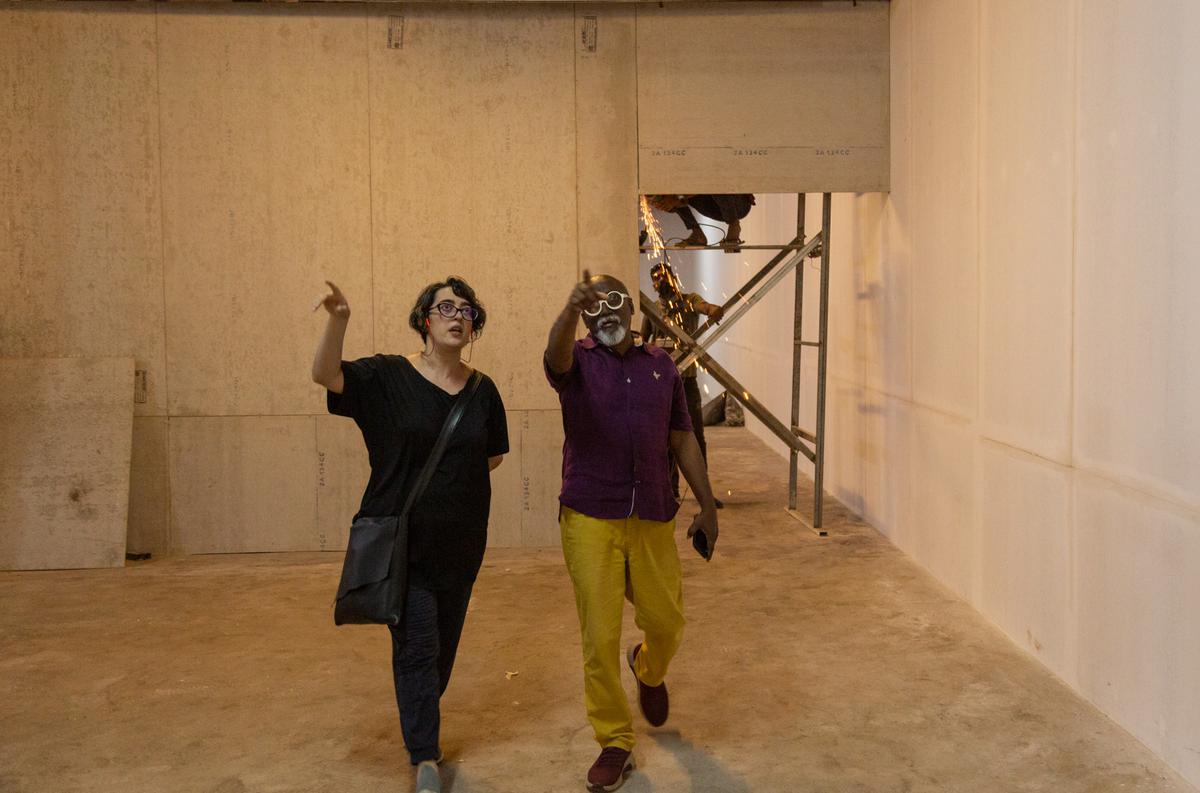
Curator Shubigi Rao with Bose Krishnamachari, president of the Kochi Biennale Foundation
| Photo Credit:
Kochi-Muziris Biennale
The curator of this year’s edition, Shubigi Rao, is a writer-artist who recently represented Singapore at the La Biennale 2022 with her ‘Pulp’ project. Visiting her work in Venice, I found layers of important stories reflecting on the community of wordworkers through books, film and paper-maze architecture — a thought-seed of her theme for the Kochi Biennale: In our Veins Flow Ink and Fire. “I realised that I was already absorbing the ideas of global diffusion in my curatorial essay for ‘Pulp II’; I even talked about the spread of contagion before the pandemic. That means obviously I’d been picking up on things unconsciously, and it was all just coming through together. And I really trust that process. I trusted everyone I met. Even the unconscious cues. It’s always interesting to listen to others talk about their work and ideas without a presumptive lens,” she shares. This organic approach shaped the focus on patient, in-depth storytelling in times of fugacious visual charades and social media overdose.
Running from December 12, 2022, through April 10, 2023, the biennale has 90 participating artists and over 40 new commissions in the Aspinwall House, Pepper House, and Anand Warehouse in Fort Kochi.
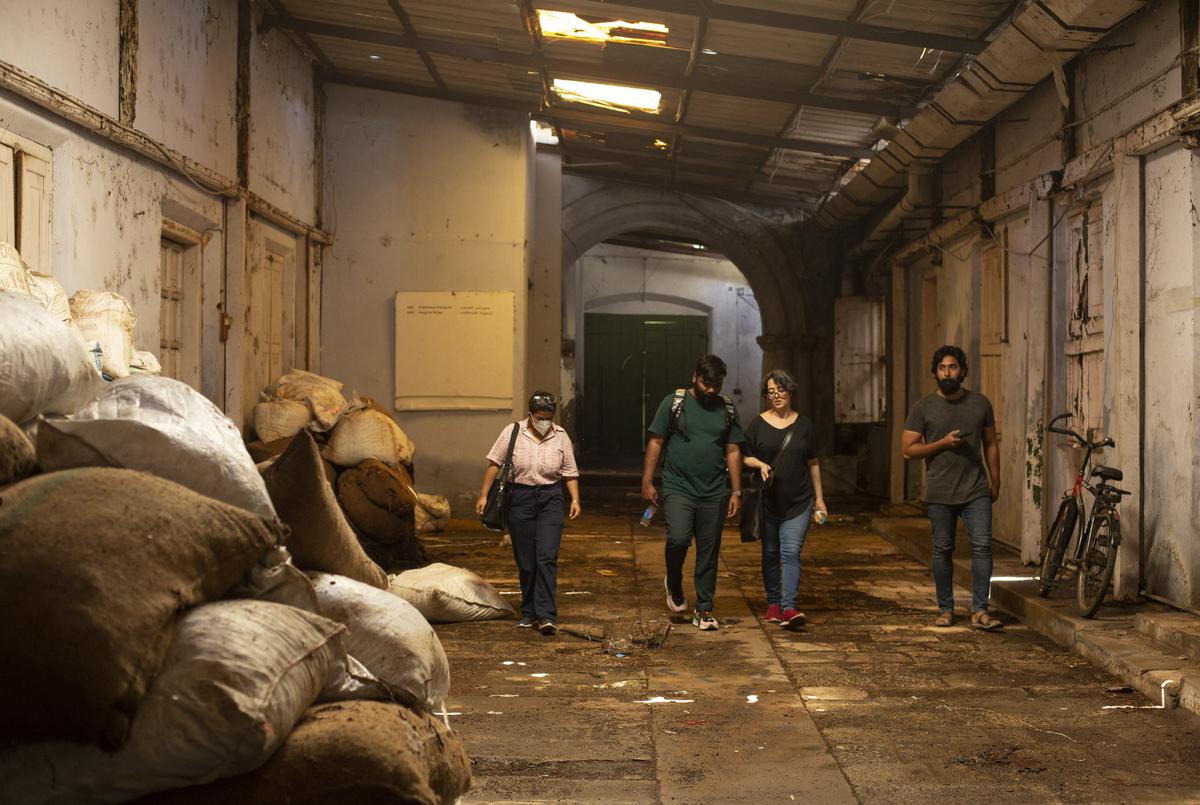
Curator Shubigi Rao touring the warehouses
| Photo Credit:
Kochi-Muziris Biennale
A place for untold stories
“When one is given the opportunity to curate a biennale as large and important as this, you have the possibility to make things happen. For artists who don’t have galleries, who don’t have representation, who might not get a look in on this art world that excludes more than it includes. Here was my chance to do something about this. And how do you do it? You find artists who can tell those stories, who tell their stories, and their stories can be regional or local, but they can be immediately understood by and resonate with people from across the world. You can remember those who’ve taught generations of artists, while their own careers may have taken a backseat. You can look at women with thoughtful practices being sidelined by bombastic, shallow work, and yet finding ways to thrive and create. A biennale isn’t just a collection of artworks, it can be sharing of ethos, of ways to make and survive, even flourish, and of finding voices to amplify,” Rao reminds.
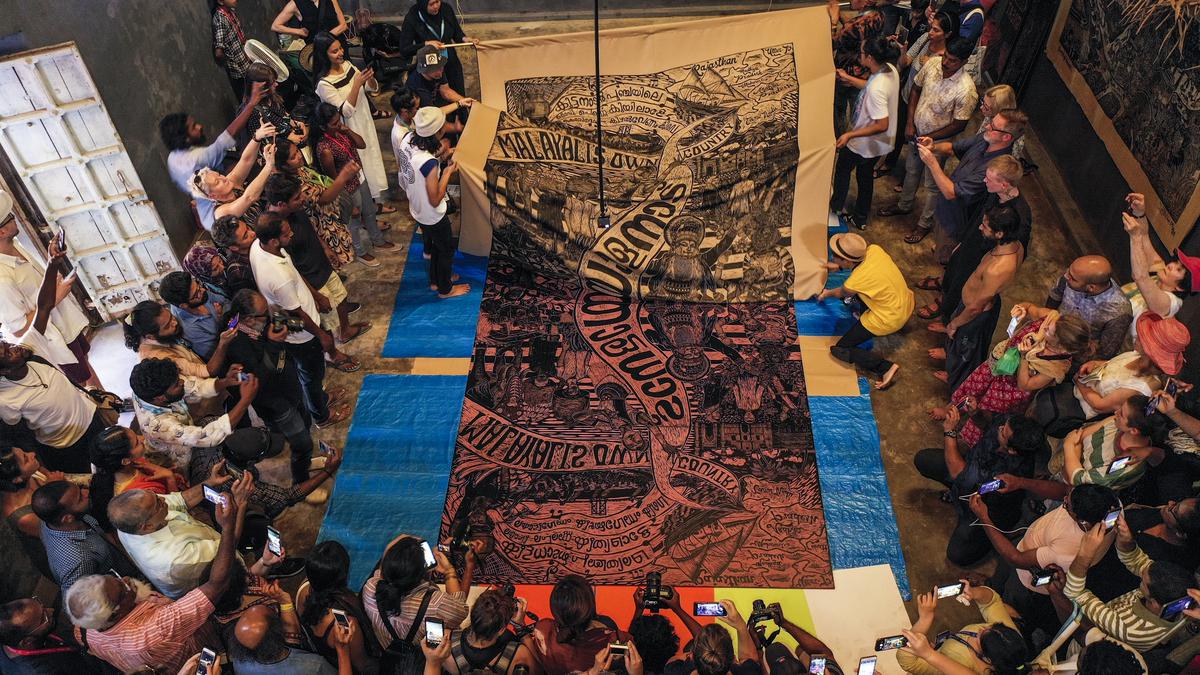
A wood-cut homage to Kerala by the Malaysian art collective, Pangrok Sulap (2018 edition)
| Photo Credit:
Kochi-Muziris Biennale
Consider artists such as Gabrielle Goliath and Sahil Naik using song to speak of loss, of destruction of community, of femicide; but song also as a communal bond as in the ‘U-ra-mi-li Project’. Another example is the investigative work by Forensic Architecture and Gabriela Löffel. In Seher Shah’s ‘Notes from a City Unknown’, forms and structures mark time and memory. “Over the course of several years, I’ve written small notes on a city. Unfinished stories through moments of connection and distance,” she says.
Rao explains that when she says “storytelling and strategy, it’s strategy as a way of talking about your environment, the things you care about that are very local, but also universally understood. This is especially the case when you look at the issues that affect us globally. How to resist them, or how to effect change — these are the strategies we need to share”.
Home of commons
With voices from places as diverse as Ukraine, Kenya, Norway, Palestine and Guadalupe, the substantive storytelling will comprise divergent narratives and plural perspectives in the context of the current socio-political climate. The central idea is still one: solidarity.
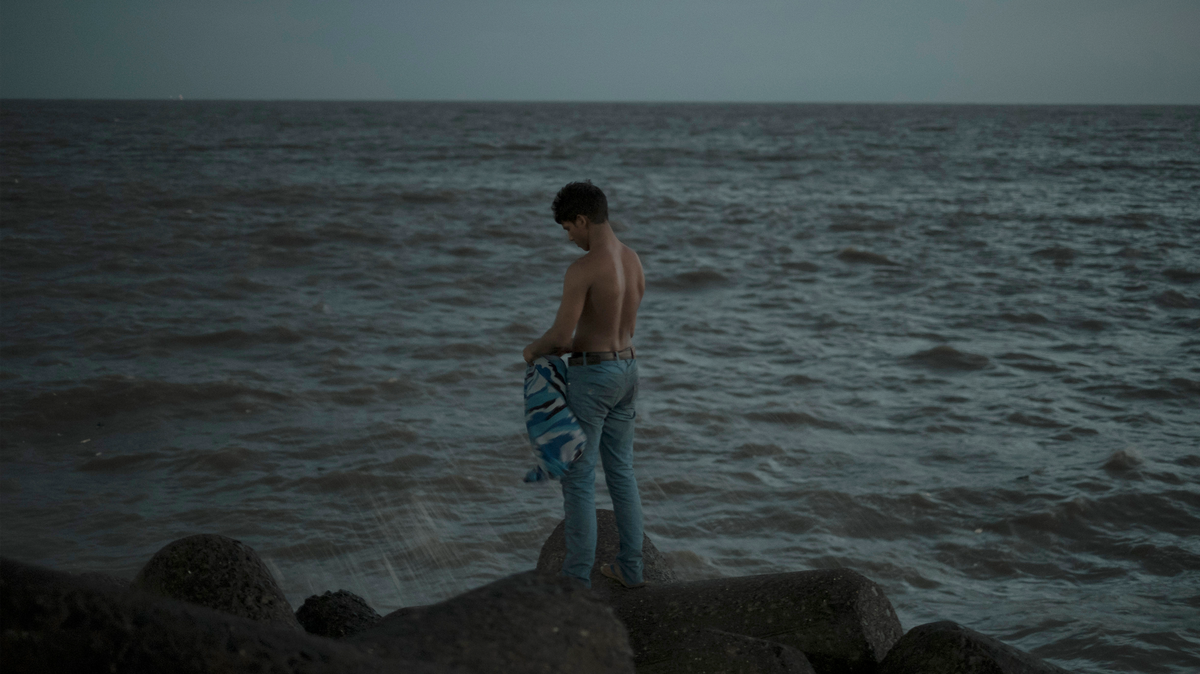
Madiha Aijaz’s ‘Death Sentence in Two Languages’, courtesy of Uneza Aijaz
| Photo Credit:
Kochi-Muziris Biennale
And the process is the people. “My conviction grew ever stronger that one of the most powerful ways to create is by way of consciously making a commons. It’s a very overused word, but it was the word I looked at, to actually examine where the power resides with people who are assumed to be powerless. The power resides in our thoughts and our actions, of course. And the other thing is satire — when you have no power, the ability to mock the people who have power over you is incredibly powerful.”
A case in point is Martta Tuomaala’s video, FinnCycling-Soumi-Perkele! that satirises Finnish politics through what appears a workout video but is actually protest rap and fiery monologue. Another example is Disnovation’s disruptive work that challenges dominant techno-solutionist ideologies.
“Across the world, public spaces are being taken over and turned into private or monetised hands. This is the loss of the commons. The commons originally was not only an idea, it was physical place. When I say the biennale is about the commons, I’m talking about territory. The commons is a place where people should be able to generate ideas in their own arena where they feel safe to do so.”
Sonia Khurana at the 2018 edition
| Photo Credit:
Kochi-Muziris Biennale
This almost seems like a paradoxical platform, given the “art world” itself has its vices. Rao does not disagree. “We’ve appropriated the words of people actually at the forefront of struggle. Artspeak takes their work, the art world makes its bones on it, builds careers on it, and then abandons these buzzwords when they fall out of favour. It’s a tremulous disservice to all who actually are at the forefront of these struggles, like that of decolonising, the climate crisis.”
Erasing all divisions
The physical and the virtual won’t stand as binaries at the biennale. “The fact that we navigate so easily between both worlds means they overlap a lot; if you’ve ever daydreamed during a conversation with somebody, you’re inhabiting a world that’s virtual. And this predates digital online technology. Art-making is an imagined world, a biennale is potentially a format of an imagined world,” Rao reasons.
Equally inconsequential are ethnic, racial or nationalistic divisions. “They deny the fact that language, ideas and culture have defied those borders. How can a nation be in opposition to these things? National boundaries are also almost always temporary. We need to weed it out because it’s what causes mistrust, hatred and war.”
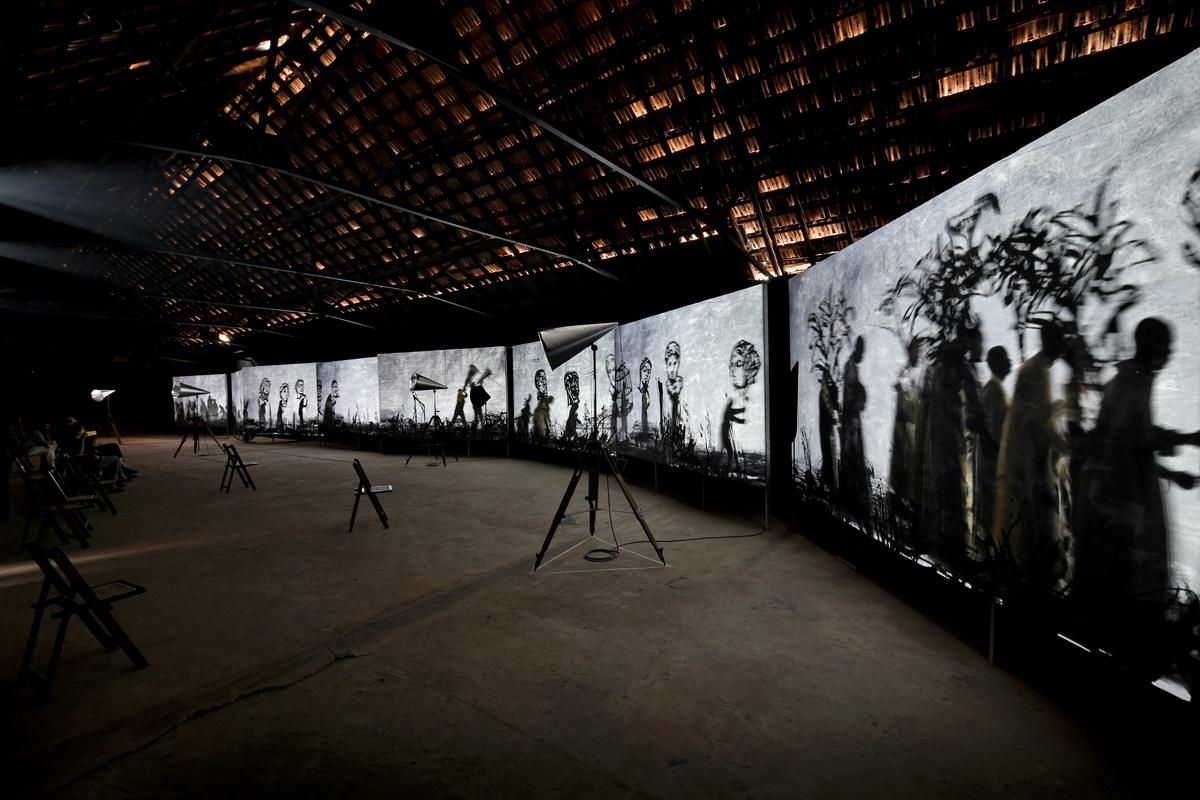
William Kentridge’s ‘More Sweetly Play the Dance’ (2018 edition)
| Photo Credit:
Mohammed Roshan
Fort of fantasy
The resting quarters of Fort Kochi, meanwhile, have been quietly adding to the alchemy of the art. “When land doesn’t suffer human intervention, gets overgrown, there’s a lot of fauna. I’m always struck by how many beautiful life forms exist in between biennales in Kochi. We have to temporarily displace and unhome them, and then they come right back.” Think monitor lizards, snakes and a range of fungi and incredible insects.
A cat peeps from the Aspinwall House as the main character of Tenzing Dakpa’s photo-work on memories of home. “I see the cat as myself. When it requires food and tender love it comes to you, otherwise it’s on its own,” he says.

Aspinwall House
| Photo Credit:
Kochi-Muziris Biennale
There are other beasts, too. “You’re hyper focusing, talking to an artist amidst the noise of construction, and thinking about extra-terrestrial life forms being completely like flora and fauna [and not human-like at all], and you see a white-bellied sea eagle being baited by fearless crows overhead. There’s the realisation that you can have this heavy, intense human footprint, quite grotesque in how we are often scarring our planet, but the moment the biennale is over, this wild, wondrous life comes right back. I know this makes it look like it’s an exoticised jungle, fantastical orientalist trope. But it’s a whole other life. And the most important thing — the whole point of my story — there is such a huge world outside of ourselves and our small interests and our small lives, and the art world could do with more of that realisation and less of its insularity. That’s my commons.”
The senior writer-editor’s practice straddles convergent cultures, global literature, multidisciplinary arts, and social issues.
Stay connected with us on social media platform for instant update click here to join our Twitter, & Facebook
We are now on Telegram. Click here to join our channel (@TechiUpdate) and stay updated with the latest Technology headlines.
For all the latest Entertainment News Click Here
For the latest news and updates, follow us on Google News.
